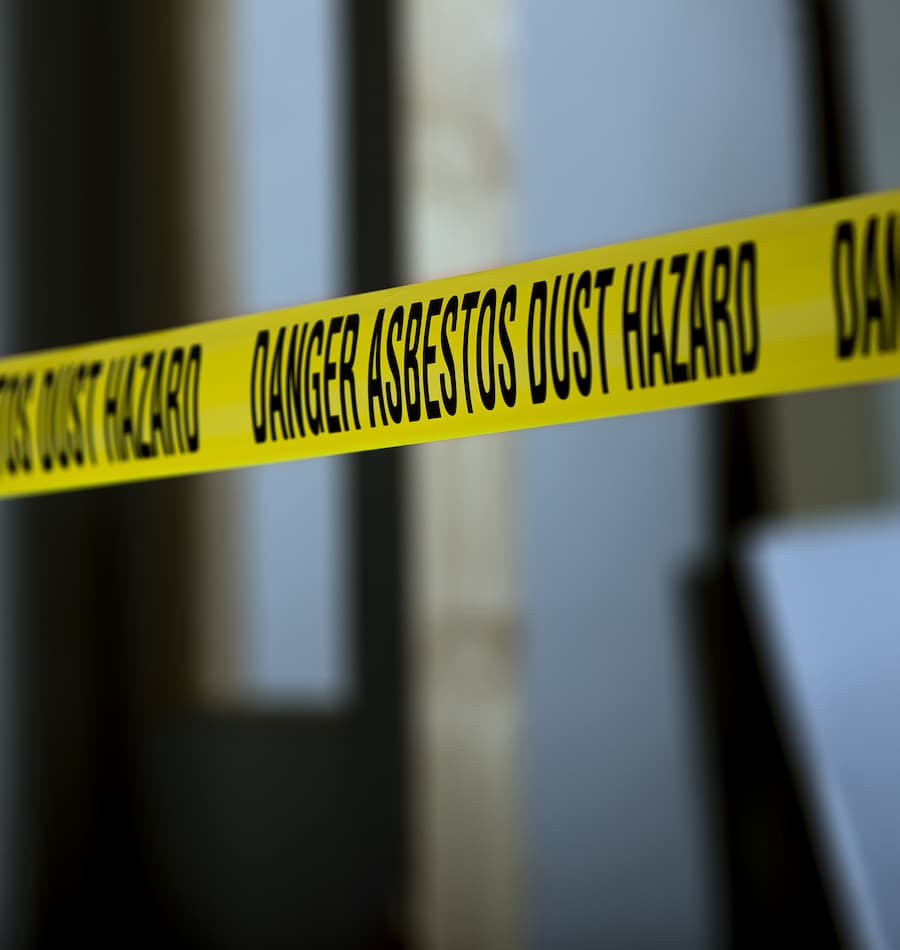About Asbestos
Asbestos is a naturally occurring mineral substance that can be pulled into a fluffy consistency. Asbestos fibers are soft and flexible yet resistant to heat, electricity and chemical corrosion. Pure asbestos is an effective insulator, and it can also be mixed into cloth, paper, cement, plastic and other materials to make them stronger.
The term asbestos refers to six unique minerals belonging to two mineral families, serpentine and amphibole. The three main types of asbestos that you may come across whilst carrying out building work are:
- Chrysotile (white asbestos) – most commonly used type of asbestos with fibres that are usually fine in texture, possessing high flexibility and good heat resistant properties, making it ideal for use in cement, brake pads/linings and roofing materials.
- Amosite (brown asbestos) – particularly strong and heat-resistant type of asbestos that was commonly used in cement sheet, plumbing insulation and electrical insulation.
- Crocidolite (blue asbestos) – very thin fibres and, if inhaled, are easily lodged in the lungs. Its thin fibres and brittle nature make it one of the most harmful forms of asbestos, as it easily breaks down and leads to asbestos exposure.
Other types of asbestos include Tremolite, Actinolite and Anthophyllite that were often found as contaminants in commercially sold asbestos products.
In the past, the special properties of asbestos made it popular for:
- asbestos-cement sheet cladding, roofing and drainage pipes
- backing material for floor tiles and vinyl sheets
- insulation board for thermal protection (eg, around fireplaces)
- textured ceilings and sprayed-on wall surfaces
- lagging for insulation around pipes, heaters and hot water cylinders
- vehicle brakes and clutches
- spouting and guttering components etc.
Asbestos was also used in household items, such as:
- oven gloves
- ironing board pads
- simmer mats for stoves
- fire blankets etc.
Asbestos was mainly imported and used before the 1980s. Once the health risks of asbestos were known, its use was gradually stopped, and other materials replaced it. However, products and appliances with asbestos content may still be around, particularly in homes built before 1984.
Asbestos is a proven human carcinogen, and all forms of asbestos can cause cancer in a dose-dependent manner. The greater the exposure, and the longer the time of exposure, the greater the risk of developing an asbestos-related disease. Inhaling significant quantities of airborne asbestos causes:
- asbestosis (scarring of lung tissue)
- mesothelioma (malignant tumours, cancers that develop around the lungs or intestine)
- pleural plaques (thickening of membranes around the lungs)
- cancer of the lung, larynx and ovary.
Symptoms of asbestos-related diseases include breathing difficulties and ‘scarring’ of the lung that can be detected by x-ray. Smoking can increase the risk of developing lung cancer following exposure to asbestos.
Raw asbestos was first imported into New Zealand in the late 1930s. It was used to make products that comprised of asbestos mixed with cement. These products were manufactured until the mid-1980s. New Zealand’s first Asbestos Regulations did not come into effect until 1978, and it became illegal to import blue and brown asbestos into the country in its raw form from 1984.
Asbestos-containing products (also known as ACMs) in New Zealand at the time were used until supplies ran out. On 1 October 2016, it became illegal to import asbestos-containing products into New Zealand. Buildings built, altered or refurbished from 1940 until the mid-1980s are likely to contain ACMs.
Our Service
Once asbestos is identified, a Quote is provided to the Client. If they accept the Quote, ACM Removals Ltd will submit a WorkSafe Notification five days prior to the removal start date (as per legislation).
Once the job starts, the removal area has to be marked and secured. After that the removal process can start, according to legislation and ACMR’s safe practices.
After the removal is done and the work area is asbestos free, the personnel, equipment and tools are decontaminated. All the asbestos waste is appropriately wrapped/bagged and placed in a lined tipper truck or a skip bin for transport.
When the site is ready for inspection, a visit by a Clearance Inspector is scheduled. After the Client receives the Clearance Report, the site can be accessed by the Client.
When supplying a Quote, ACM Removals Ltd has to consider all aspects of the removal process.
Typically, there is a cost associated with the man hours required for the removal, use of removal equipment, administration costs, transport, consumables, disposal of waste etc. There is also the cost of the Clearance Report that can be paid by the client directly, or through ACMR. Apart from that, there may be additional costs, for example use of scaffold, edge protection, height equipment, rental of heavy machinery etc.
All of this is considered carefully when providing a Quote, which is why our Managers prefer visiting a site and assessing all the aspects of the removal process.
ACM Removals Ltd operates in the North Island of New Zealand. If you have asbestos, and are located somewhere in the North Island, we will do our best to help you with the removal and disposal of this hazardous material.
Get a Free,
No-Obligation Quote
Prefer a chat? Give us a call on 0508 326 437
"*" indicates required fields

